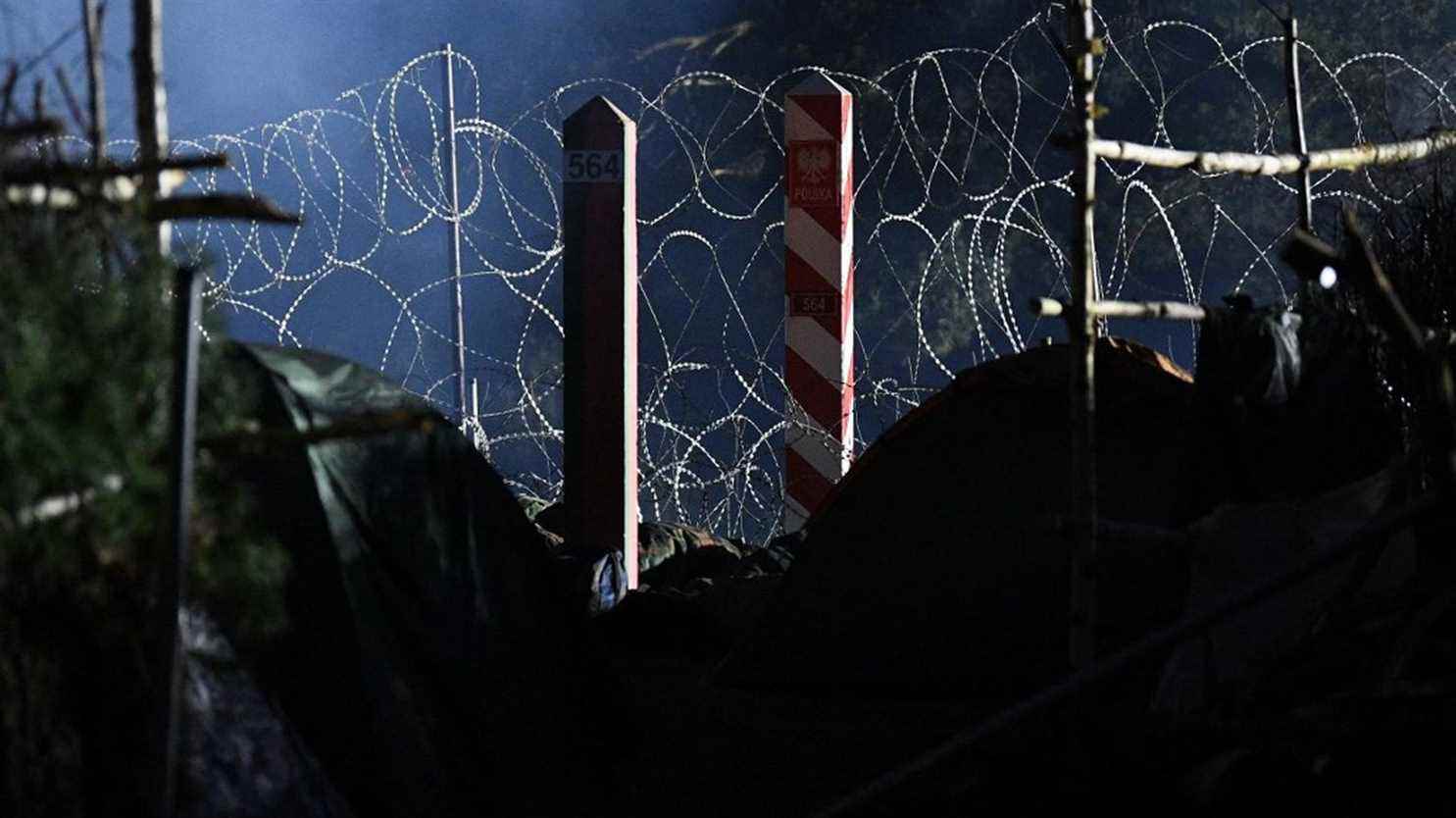“The business that we must carry out is an absolutely strategic and priority investment for the security of the nation and its citizens.” The Polish Interior Minister, Mariusz Kaminski, thus justified, Monday, November 15, the desire of his country to build a wall along the border with Belarus that thousands of migrants are trying to cross. What will it be exactly? Does Poland have the right to build it? How are the European Union and France reacting? Franceinfo answers questions that arise after this announcement.
What will this wall look like?
Construction has not yet started: the Polish Interior Ministry has announced that work could start by the end of the year, after the signing ofThe contracts scheduled for December 15 at the latest. The workers will have to take turns 24 hours a day in three shifts, the Interior Ministry said. THEThe work will cost around 353 million euros and is expected to extend over 180 kilometers, or nearly half the total length of the border between Poland and Belarus, which is just over 400 km long. The end of the work is scheduled for the first half of 2022.
For the moment, it is difficult to know where exactly this barrier will stand. “It looks like they want to start construction in four different places at the same time. But sometimes there are swamps and another part of the border is drawn by a river.”, details Dorota Dakowska, professor of political science at Sciences Po Aix, interviewed by franceinfo. In addition, this wall could pass through the primary forest of Bialowieza and constitute “a danger to the reproduction of certain species, such as the lynx”.
Why does Poland want to build a wall?
Warsaw claims to want to “protect” the arrival of migrants at its border. “This announcement comes at a time when we are in a very tense context and European public opinion is opposed to migratory movements, but the construction of this wall does not respond to the current humanitarian emergency”, analysis Dorota Dakowska.
Since the migration crisis of 2015 linked to the war in Syria, Polish opinion, previously largely in favor of welcoming migrants, has retreated. “The PiS government, the ruling party, has succeeded in scaring the Poles, explains the teacher. He constructed an anxiety-provoking discourse and persuaded his constituents that migrants posed a threat “. Today Poland is very divided on the issue. “Between 36 and 39% of people support the government and its management of the border, as many people are against it”, advance Dorota Dakowska.
Does Poland have the right to build such a barrier?
“Everyone protects their border as they see fit”, reminds franceinfo Tania Racho, doctor in European law and member of the Les Surligneurs collective. The Polish project appears “all the more legal since it is a question of strengthening the controls at the external borders of the Schengen area”, she adds. Signed in 1985, this agreement allows citizens of signatory countries to travel freely within and outside this area as if it were one country. Poland is one of them, but Belarus is not.
“The border between the two countries is an external border of the EU. Since the Schengen agreements, we relativize the borders between the countries of the Schengen zone, but we strengthen the borders with the outside, which leads to a conception of Europe fortress. “
Dorota Dakowska, professor at SciencePo Aixto franceinfo
It remains to be seen whether Poland respects the Geneva Convention relating to the Status of Refugees dating from 1951, which sets out the rights of uprooted people, as well as the legal obligations of states to ensure their protection. “International law obliges states to welcome asylum seekers while they study their request, Tania Racho advances. In theory, border guards should check with each migrant whether he is an asylum seeker. “ In the event of actions aimed at repelling them, “the border guards would be at fault in relation to the principle of non-refoulement”, specifies the specialist.
Are there other such walls in Europe?
“Poland is not the first country to want to erect such a barrier”, observes Dorota Dakowska. Spain did it around the two enclaves of Ceuta and Melilla, on Moroccan territory; Greece on a 40 km long section of its border with Turkey; Hungary on the border with Serbia and Croatia. Viktor Orban thus had a 175 km fence erected, equipped with miradors, barbed wire, thermal cameras and motion detectors for a budget of 880 million euros. “Europe must remain for the Europeans”, he had justified. But these barriers are not necessarily effective since “When we look at history, we see that the walls have not always fulfilled their functions. The border is always a place of passage”, recalls Dorota Dakowska.
What are the reactions?
Poland’s decision has generated much comment, but not all European Union member countries are on the same wavelength. “There are dissensions within the EU, notes Dorota Dakowska. European Commission President Ursula von der Leyen has said she is opposed to the EU funding barriers, but European Council President Charles Michel supports this initiative. “
In France too, the question of the wall divides. Government spokesman Gabriel Attal reaffirmed on Tuesday that France and Europe wanted to do “respect our borders”. France “is in solidarity with the countries facing this situation”, he added, before estimating that he had “no lessons to give” in Warsaw. Clément Beaune, Secretary of State for European Affairs, however assured on France 2 that he was not “for a Europe bristling with barbed wire or covering itself with walls”.
In Belarus, the government has chosen irony. “They are threatening us with new sanctions, to build a wall five meters high. If they have nothing else to do, let them do it.”, launched President Alexander Lukashenko.
